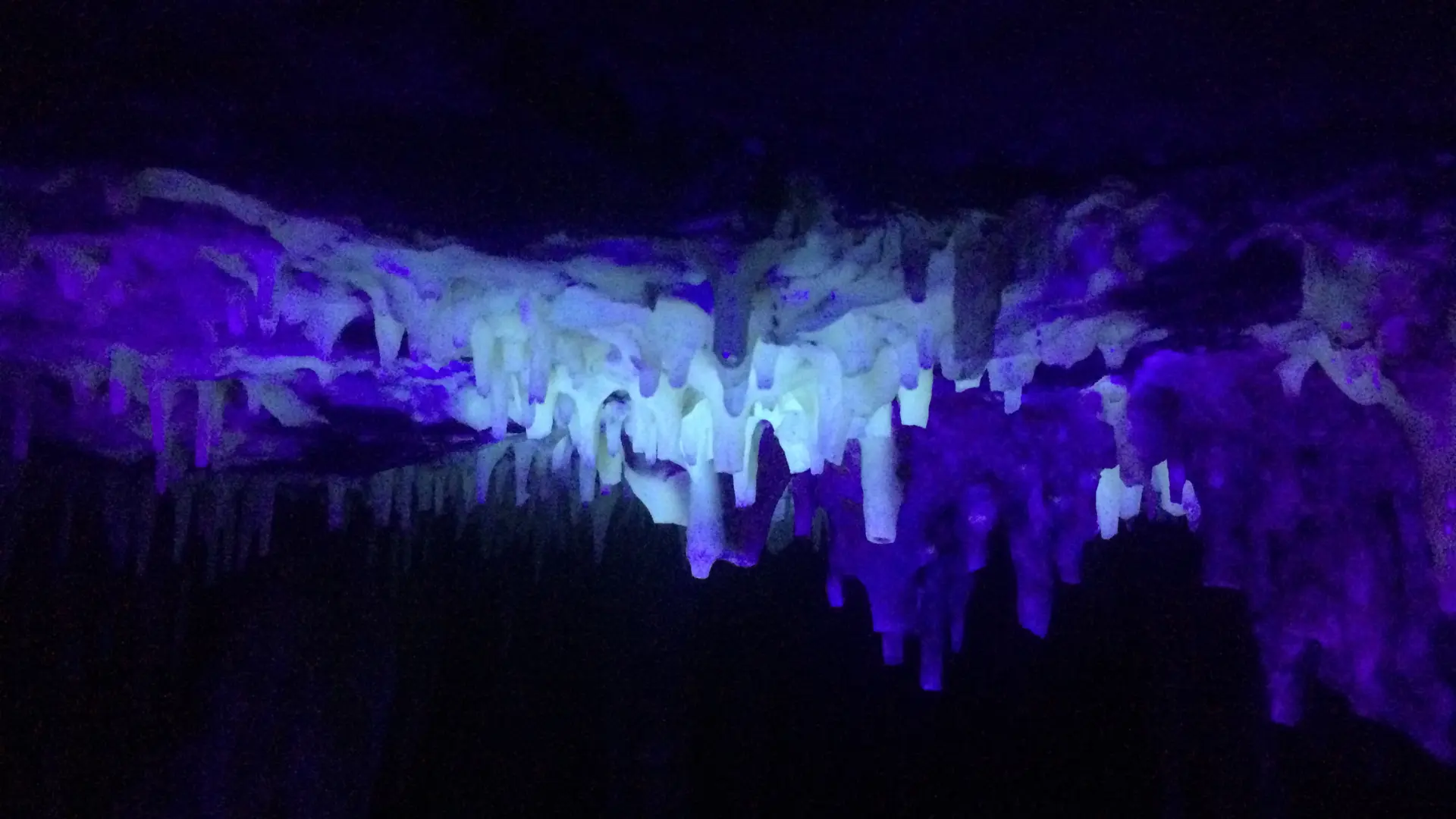During photoluminescence, a substance absorbs energy, in the form of a photon, from a light source. This forces the electrons into a higher energy state. As the electron returns to a lower energy state the photon is released in a way that produces visible light. There are two kinds of photoluminescence experienced here, fluorescence and phosphorescence.
Fluorescent formations absorb and release energy very quickly. When an ultraviolet, or black light, is directed at these deposits the manganese molecules become activated and we see the calcite release light as a blue-green glow because it is at a different wavelength than the surrounding light sources. Once the light is removed the glow on the rock disappears.

